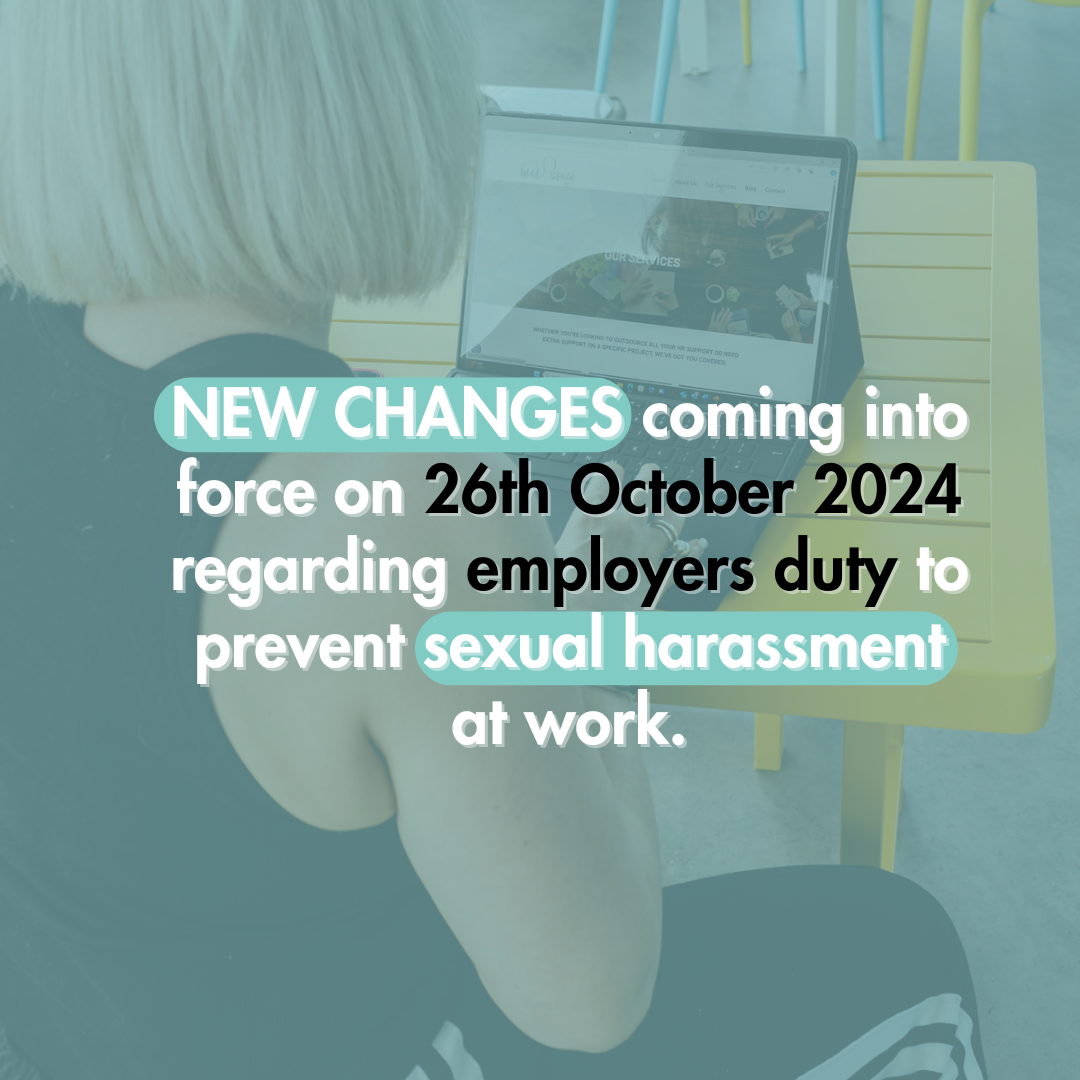
14 Oct New Sexual Harassment Requirements for Employers: What You Need to Know Before October 26th 2024
From October 26, 2024, employers in UK will face new requirements aimed at preventing sexual harassment in the workplace. These changes mean that companies need to take a proactive approach to creating a safer, more respectful environment for all employees. To help you get ready, here’s a summary of the key updates and practical tips to ensure you comply with the new standards.
What’s Changing?
The new regulations introduce more stringent requirements for employers to actively prevent sexual harassment, rather than simply responding to complaints. Here are the major shifts:
- Mandatory Training for All Employees:
- All employers are now required to provide regular, comprehensive training on sexual harassment prevention to their entire workforce. This includes training for new hires and annual refreshers for current employees.
- Training must cover not only what constitutes sexual harassment but also how to report incidents, the role of bystanders, and the company’s responsibilities under the law.
- Clear Reporting Procedures:
- Employers must establish clear, accessible channels for reporting harassment, including both internal options (like HR or designated managers) and external reporting options.
- Reporting procedures should be transparent, ensuring that employees know how to make a report and what happens next, including the steps of the investigation process.
- Proactive Risk Assessments:
- Employers are now required to conduct regular assessments of their workplace culture and environment to identify potential risks of harassment.
- These assessments should focus on areas like power imbalances, isolated workspaces, or any behaviours that could contribute to a hostile work environment.
- Based on the findings, employers must take steps to mitigate these risks, such as adjusting work policies, improving oversight, or providing additional support where needed.
- Record-Keeping Requirements:
- Businesses must keep detailed records of harassment complaints, investigations, and outcomes for a specified period (often around 3 to 5 years).
- These records should include details of the complaints, steps taken during the investigation, and any resulting actions.
Practical Steps for Employers to Prepare
With the October 26 deadline approaching, it’s important to start implementing these changes sooner rather than later. Here’s a practical checklist to help you get ready:
- Update Your Policies:
- Review your current harassment policies and ensure they align with the new requirements.
- Make sure your policies include clear definitions of sexual harassment, and the reporting process.
- Share these updated policies with your team and ensure they’re easily accessible, such as in the employee handbook or on your company intranet.
- Develop or Revise Training Programs:
- If you don’t already have a training programme in place, now is the time to develop one. Consider partnering with a professional training provider for high-quality, legally compliant training.
- For existing programmes, review the content to ensure it meets the new requirements, including a focus on bystander intervention and the updated reporting channels.
- Schedule these training sessions and ensure all employees complete them, including senior leaders.
- Establish Clear Reporting Channels:
- Set up multiple avenues for reporting harassment, such as an anonymous hotline, dedicated HR contacts, or an online reporting system.
- Ensure employees know where to go if they experience or witness harassment and feel comfortable using these channels.
- Clearly communicate the steps involved in the investigation process, so employees understand what happens after they report an incident.
- Conduct a Workplace Risk Assessment:
- Assess your current work environment to identify any factors that could contribute to a higher risk of harassment.
- Engage employees in this process through surveys or feedback sessions to get a sense of the workplace culture.
- Develop an action plan to address any issues identified, and track your progress to ensure ongoing improvement.
- Strengthen Record-Keeping Processes:
- Establish a secure system for tracking complaints, investigations, and resolutions. This could be as simple as a secure spreadsheet or as complex as a dedicated HR software.
- Make sure only authorised individuals can access these records to protect confidentiality.
- Keep track of training completion records as well, in case of audits or legal inquiries.
A Safer Workplace Starts with Proactivity
These new requirements place a greater emphasis on employers actively fostering a respectful workplace rather than just reacting when issues arise. While adapting to these changes may require some investment of time and resources, the benefits are significant. A safer, more inclusive work environment leads to higher employee satisfaction, reduced turnover, and a stronger company reputation.
If you would like support with meeting the new standard, you can contact is at hello@theheadspacebureau.com or by visiting www.theheadspacebureau.com.


